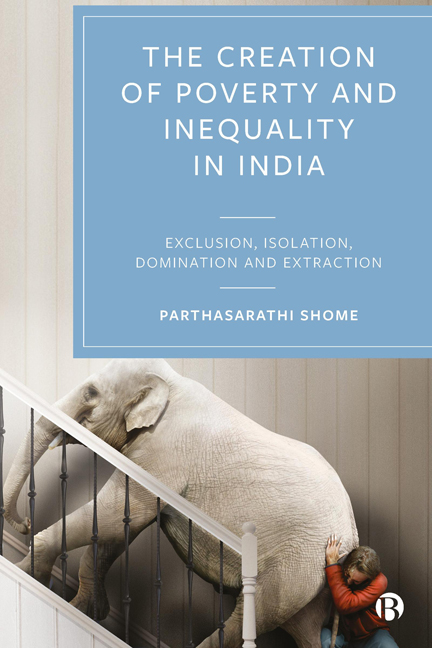Book contents
- Frontmatter
- Dedication
- Contents
- List of Figures and Tables
- Preface
- 1 Introduction
- Part I Macro-Economy and Human Development
- Part II Sources of Inequality and Poverty
- Part III Sectoral Effects
- Part IV Radical Humanism
- Appendix 2.1 Cash Use in India: A Cross-Country Comparison
- Appendix 2.2 Macro-Economic Comparisons: Selected Economies
- Appendix 4.1 Selected Country Tables
- Appendix 5.1 Evidence on Inequality in the US
- Appendix 8.1 Impact of Land Policy
- Appendix 11.1 Impact of Asset Transfer on the Poor
- Index
8 - The Rural-Urban Divide
Published online by Cambridge University Press: 18 January 2024
- Frontmatter
- Dedication
- Contents
- List of Figures and Tables
- Preface
- 1 Introduction
- Part I Macro-Economy and Human Development
- Part II Sources of Inequality and Poverty
- Part III Sectoral Effects
- Part IV Radical Humanism
- Appendix 2.1 Cash Use in India: A Cross-Country Comparison
- Appendix 2.2 Macro-Economic Comparisons: Selected Economies
- Appendix 4.1 Selected Country Tables
- Appendix 5.1 Evidence on Inequality in the US
- Appendix 8.1 Impact of Land Policy
- Appendix 11.1 Impact of Asset Transfer on the Poor
- Index
Summary
Introduction
The 2022 World Development Indicators, World Bank, indicate that 65 per cent of the total population comprises the rural population. Of this, 55 per cent engage in agricultural activities according to the Department of Agriculture and Farmers’ Welfare, Government of India (GOI). Nevertheless, agriculture's share in gross domestic product (GDP) has declined steadily since India's independence. Current shares have diminished significantly when seen against the relative size of the rural population. The continuation of differences between rural and urban sectors informs the higher incidence of poverty and the extent of inequality between the sectors. Comparing various sectors, Table 8.1 reveals that the share in GDP of agriculture and forestry and fishing has declined while those of mining, manufacturing and services – and their components – have increased. In particular, those of trade and the financial services have increased indicating that sectors that have habitually participated in and are accessed by the relatively rich and wealthy in the organized sectors have gained at the cost of others – the poorer. It points to a lop-sided development pattern for a primarily rural society with labour-intensive agriculture.
Ideally, the rate of return to capital use and the rate of return to the supply of labour should approach each other over time. A rate of return from capital markets that persistently exceeds the rate of return from offering work, disrupts that balance. This disequilibrium has been unfolding for decades in the world's democracies and glaringly so in India – and it has exacerbated the rural-urban divide. This chapter analyses the existing and growing rural-urban divide causing income inequality, in particular in India. Some proposals of redressal are presented in Chapter 11.
Drivers of rural-urban migration
A few observations contrasting India and China may help to assess how the two economies moved over time with respect to their agricultural sectors. Agriculture – rural activities – continues to provide the livelihood of over half of India's population though accompanying structural and economic reforms have not kept up (Gulati et al., 2021a). While the grain sector still dominates India's cropped area, China, after meeting its domestic demand for food, has transformed its agriculture over the past four decades.
- Type
- Chapter
- Information
- The Creation of Poverty and Inequality in IndiaExclusion, Isolation, Domination and Extraction, pp. 195 - 206Publisher: Bristol University PressPrint publication year: 2023



